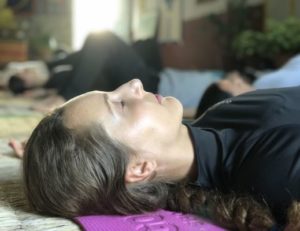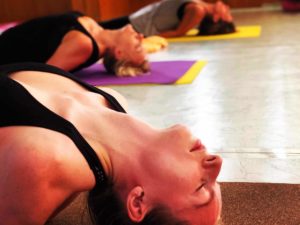From the very beginning, our breath sustains our life at every moment. It´s our personal rhythm of life and a pacemaker which influences various biochemical, hormonal and neuronal processes. Yet, in daily life, we breathe rather unconsciously although our healthy breathing is a key to a healthy body and mind.
As mentioned in the article Calm breath-cam mind our vegetative nervous system brings our physical and mental state into balance with our surroundings. The breath transmits signals from the outside to the inside and vice versa. So the breath influences and at the same time reflects our inner state. It´s a mirror of these complex mechanisms and a direct bridge between body and mind.
In a stressful situation, we take a view deep breaths to calm down because slow deep breathing does not only show a relaxed inner state it also causes a feeling of being safe and calm. Thus we can control our state of mind, our emotions and physical processes when we breathe consciously in the right manner and free our mind from burdening thoughts and emotions and bring our body back to regenerative programs.
Yoga and the healthy breathing
In traditional Yoga, the breath as the body-mind-bridge is a powerful tool and observed continuously. Breath awareness is key to any yogic technique and expands the mind more and more over time. A slow and deep breath should be established to foster spiritual practice. The full lunges´ capacity should be used so that the frequency of breaths can decline. Our diaphragm, the main breathing muscle has to move freely for that.
Constant chest breathing causes physiological stress
In the west, most people learn from an early age to suck the belly in and bring the chest forward. Tight clothes force us to develop chest breathing. Beacuase of that breathing pattern, our body thinks that we´re in a dangerous situation and a state of caution, ready to react. Over the years our body tends to be in a constant state of physiological stress, affecting the mind as well. The relate hormones accumulate in our body and create the stress adapted behavior and low resilience reactions. Our diaphragm withers and over time mental and physical functions become an output of a system in fear and danger. Worries and a low immune system are the results (More about long term effects of stress here).
To create the opposite, positive input, we have to train our main breathing muscle, the diaphragm. Well developed it can go back to its original way of working.
Establish diaphragmatic breathing
Relax your belly completely and let the diaphragm move freely so that the lounge capacity can expand fully. You start to breathe deeply and slowly and increase the volume of the breath slowly. With a better quality of the breath the frequency declines and signals our body a safe environment. We can relax, calm our minds and regenerate.
Constant healthy breathing
First of all check on your breathing quality during the day and establish healthy diaphragmatic breathing. You will learn to be calm and in control in otherwise stressful situations. Antagonists of long term stress hormones are released in the body, we heal faster and our immune system becomes stronger, detoxification processes are accelerated. Your mind is in a more positive and powerful state. With increased memory and focus, our creative potential can unfold more freely.
You can learn more about practices of pranayama and science of breath at our Pranayama Teacher Training in India and Nepal.



